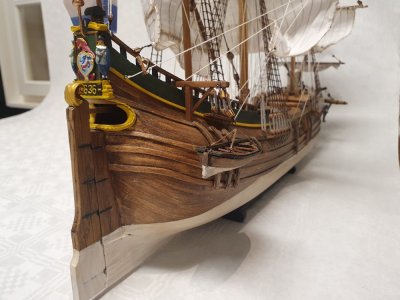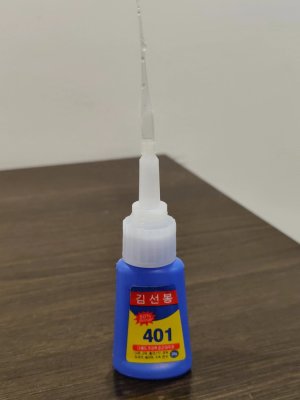- Joined
- Sep 3, 2021
- Messages
- 5,139
- Points
- 738

When you announced this build, it was rather clear to me that this model is something like an intermezzo of sorts, just to keep yourself entertained, next to your demanding professional career. I still see kits with these printed parts as introductions into model ship building, especially for those who are wary of the complex compound surfaces at bow and stern. One could then, after building some confidence, go to the net step. Having witnessed your work on the WB, I am confident that you are more than capable of planking almost any curved surface.Johan, I think it is important to know that I do not view this build as my "pièce de résistance" so to speak. If I am building a ship on which I am happy to spend 3-5 years, I would probably not opt for one with resin parts. I also said earlier that if a modeler wants to learn how to plank a model, resin parts is not the correct option - it is a bit like driving a car with a manual or automatic gearbox. I have, however, done my fair bit of shaping bow and filler pieces (in fact you will remember that I boxed and shaped the whole hull of WB2) whilst all my planking has been single layered.
As far as "cheating" goes, the answer is simple. Cheat who - and secondly, why does that matter? As far as the difficulty of the build goes, I can tell you one thing. I have once built a model with pre-shaped and pre-cut planks and that was one of my most difficult builds - simply because there is zero room for error.
A last thing to consider is the availability of that model that you really want to build, and which has always been a dream to you. We so much like to categorize ourselves as POF or POB, scratch, plastic or cardstock builders, but what to do if I do not have the ability to build a scratch model and the model that I really want to is only available in a non-preferred medium? I can tell you one thing - the moment that a kit becomes available of the Brederode, I will buy it and build it, irrespective of the medium or means of construction.
I maintain - build what you love and love what you build!
With regards to my remark to cheating; that's personal. For any next build, I would not be able to convince myself to go ahead and build a kit with printed bow- and stern parts, regardless of how tempting that would be.
On the other hand, I will not be making any derogatory remarks (nor was it my intention to) about anyone who does.
With regards to your last statement: I fully concur!



 . I thought my ship looks cool and then…….
. I thought my ship looks cool and then……. 




